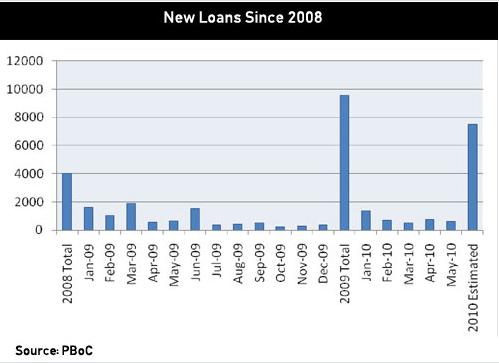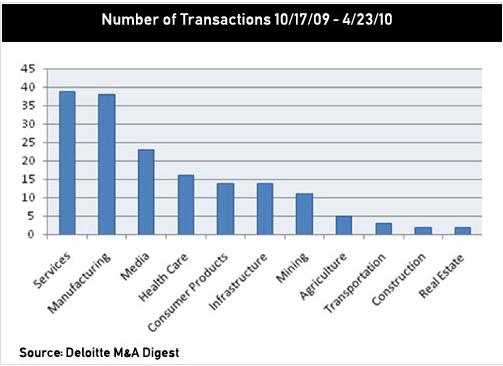
Seeking Growth: Three Private Equity Opportunities in China
Significant investment opportunities exist for private equity funds willing to spend the time and money to find companies with truly great potential
This year has seen considerable activity among private equity firms in China with more than 100 funds denominated in Chinese currency (RMB) now competing with numerous funds offshore. This level of interest highlights the fact that significant investment opportunities exist for private equity funds willing to spend the time and money to find companies with truly great potential. My firm believes the Chinese economy will remain strong going forward while it adjusts from a dependence on exports and investment towards one where consumer consumption is the leading source of growth. Those firms that position themselves now stand to reap considerable rewards from this ongoing economic shift.
Another significant tailwind for the private equity industry in China occurred late last year with the introduction of the ChiNext GEM board in Shenzhen. ChiNext has become the preferred means of exit for private equity investors due to the high valuations IPOs frequently receive there as well as the board’s permissive listing requirements. At last count, there have been twenty such exits by private equity investors since the board’s inception a little over six months ago.
Innovative companies with growth potential in need of capitalIn response to the global economic crisis, the Chinese government implemented a stimulus plan that required domestic banks to aggressively increase their loan portfolios. The result was a significant expansion in new lending: growing from four trillion RMB in 2008 to more than nine and a half trillion in 2009 and projected to reach seven and a half trillion in 2010.
The result of this lending spree was an impressive 8.7 percent growth in real GDP in 2009 and an expected growth of 9.7 percent in 2010. However, according to our research these loans were not distributed to the most promising, well-managed companies, but rather were handed out to large, and often inefficiently run state owned enterprises. This misallocation of resources is due in part to domestic lending policies which base loan decisions on a company’s collateral instead of its income.

Recent acquisitions in China
Data from transactions over the last six months clearly indicate where private equity and strategic buyers see opportunities.
Of these sectors, we believe agriculture, health care and media represent the most compelling opportunities for private equity firms to profit from the shift towards a consumer-driven economy in China.
Opportunities in agriculture

To capitalize on these opportunities, several transactions by international players have been announced recently including a 4 billion RMB investment in March of this year by a consortium led by the Blackstone Group in an agricultural trading center in Shandong province. Also, in June of last year Kohlberg Kravis Roberts & Co entered the sector with an investment in a nationwide dairy farming group for an undisclosed amount. In addition, last year there were numerous exits from the sector, with 15 agriculture firms in China offering their shares publicaly via IPOs.
Opportunities in health care
Development in the health care industry is expected to come from several sources including the gradual graying of the Chinese population, increasing government subsidies and initiatives meant to improve health care nationwide, and the continued reliance on OTC medications as cheap substitutes for expensive or unavailable healthcare normally done in clinics. The resulting expansion is expected to grow the industry from 995 billion RMB in 2010 to 1.8 trillion in 2015 for a growth of 81%.
Recent transactions include two by domestic fund Jiuding Capital; with a 110 million RMB investment in April of a Shanxi based pharmaceutical company, and a 34 million RMB investment a month earlier in medical researcher Qili Pharmaceutical. Successful exits include the public offering in April of a Chinese pharmaceutical manufacturer invested in by a Goldman Sachs led consortium, as well as an IPO in December of last year by Chinese medical imaging company Concord Medical Services Holdings who counted a Carlyle & CICC led consortium as early investors.
Opportunities in media
The media and communications market is currently valued at 1.3 billion RMB. By 2015, this figure is expected to nearly double to 2.4 billion. Future growth is expected to come from an increase in consumer demand for domestic media products as well as from large investments in the sector by the Chinese government in order to meet its goal of creating a homegrown media industry to rival that found in the United States.
Currently foreign capital is not allowed to invest in domestic media companies, but funds raised locally and denominated in RMB are not subject to such restrictions. In our opinion, the current interest in RMB funds can be partially explained as attempts to get around government restrictions in order to access the Chinese media industry. Recent activity includes the Beijing Municipal government’s agreement to set up a fund with the Carlyle Group as well as its expected partnership with UBS. In addition, Carlyle and domestic fund Fosun are also developing their own shared RMB fund.
Among several transactions in the space were investments late last year by Sequoia Capital in a local cartoon producer GreatDreams, and by local fund Hony Capital in a Jiangsu-based publisher Phoenix Publishing. In addition, there was an investment last May in media conglomerate Nanjing Times Media by domestic fund Jiangsu Hi-Tech Investment Group. Also, in the past six months there have been a total of eleven media related companies who have provided exits for their early stage investors by successfully listing their shares on the ChiNext board.
Going forward: risks & opportunities
Central to our thesis that investment opportunities exist in the agriculture, healthcare and media sectors is the continuing growth in consumption by average Chinese citizens. As attractive as this idea is, it is not written in stone and risks exist that could lead to other less appealing outcomes. We believe the principle risks are higher levels of inflation and the possibility of a bank bailout sometime in the future.
In our opinion, consumer inflation will gradually rise and the government will eventually be forced to either raise interest rates or increase the value of the RMB or both. Of greater concern however is the continuing inflation in housing prices throughout the country which forces average consumers to spend less in order to save more for overpriced homes. In our opinion asset inflation will be more difficult for the government to reign in because China’s current economic growth is heavily dependent on investments in fixed assets.
A different but related risk is the possibility that a bank bailout will be necessary in the future in order to correct the lending mistakes made in the aftermath of the financial crisis. If history is a guide, any bank bailout will be financed by a further lowering of the deposit rate. Because most Chinese are heavy savers, and they save with a specific goal in mind (for example housing or education expenses) a decrease in the interest rate forces them to deposit more and consume less.
With these risks in mind, we suggest investing in firms that do not depend on conspicuous consumption but rather fulfill the ordinary demands of regular citizens. We also think it’s critical to be invested in sectors that have the strong support of the government and are in line with its goal of providing a better quality of life for its people. Going forward, it is our opinion that firms in the media, healthcare and agriculture sectors will see their businesses continue to thrive and will be among the least effected in the event of a downturn.
[This article has been reproduced with permission from Knowledge Network, the online thought leadership platform for Thunderbird School of Global Management https://thunderbird.asu.edu/knowledge-network/]















